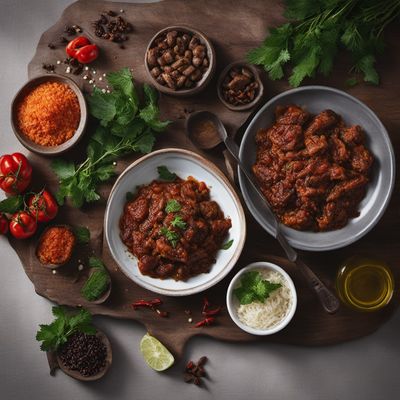
Ingredient
Ullucu
The Andean Gem
Ullucu is a small tuber with a thin, waxy skin that comes in a variety of colors, including red, yellow, and purple. It has a crisp texture and a slightly sweet, nutty flavor. When cooked, ullucu retains its vibrant color and adds a delightful crunch to salads, stir-fries, and stews.
Origins and history
Ullucu has been cultivated in the Andean region for thousands of years and holds cultural significance for indigenous communities. It is believed to have originated in the high-altitude regions of Peru and Bolivia. Ullucu was a staple food for the Inca civilization and continues to be an important crop in the Andean diet.
Nutritional information
Ullucu is a good source of dietary fiber, vitamin C, and potassium. It is low in calories and fat, making it a healthy addition to meals.
Allergens
There are no known allergens associated with ullucu.
How to select
When selecting ullucu, look for firm tubers with smooth, unblemished skin. Avoid any that have soft spots or signs of mold. Choose ullucu with vibrant colors, as they tend to have a more intense flavor.
Storage recommendations
To store ullucu, keep it in a cool, dark place with good ventilation. Avoid storing it in the refrigerator, as the cold temperature can cause the tubers to become soft and lose their flavor. Properly stored ullucu can last for several weeks.
How to produce
Ullucu can be grown in cool, high-altitude regions with well-drained soil. It thrives in temperatures between 50-70°F (10-21°C) and requires regular watering. Plant ullucu tubers in early spring and harvest them in late fall or early winter.
Preparation tips
To prepare ullucu, scrub the tubers under running water to remove any dirt. Peel the skin if desired, although it is edible. Ullucu can be boiled, steamed, roasted, or stir-fried. It pairs well with other root vegetables, herbs, and spices. Add cooked ullucu to salads, soups, or use it as a colorful side dish.
Culinary uses
Ullucu is commonly used in Andean cuisine, where it is incorporated into traditional dishes such as causa (a layered potato dish), stews, and salads. It can also be pickled or used as a garnish for its vibrant colors.
Availability
Ullucu is primarily cultivated in the Andean region, including Peru, Bolivia, and Ecuador.


